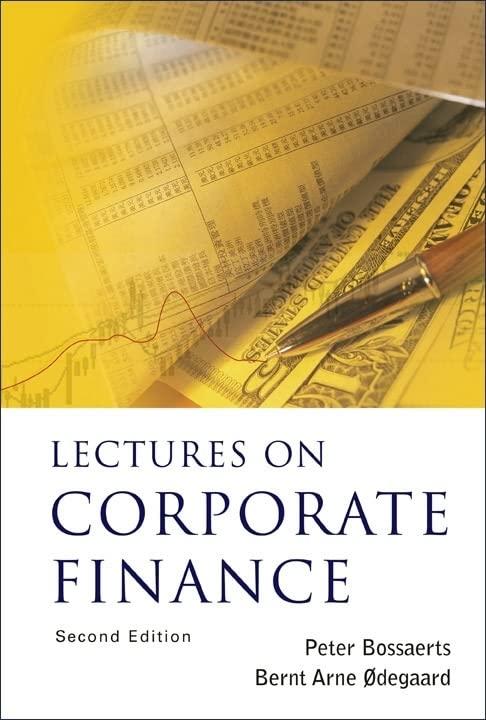In the question you are asked to assume risk neutrality. This means that the state price probabilities
Question:
In the question you are asked to assume risk neutrality. This means that the state price probabilities are not colored by risk aversion (fear) so they are equal to the estimated probabilities in the question.
VanSant Corporation and Matta, Inc., are identical firms except that Matta, Inc., is more levered than VanSant. The companies' economists agree that the probability of a recession next year is \(20 \%\) and the probability of a continuation of the current expansion is \(80 \%\). If the expansion continues, each firm will have EBIT of 2 million. If a recession occurs, each firm will have EBIT of 0.8 million. VanSant's debt obligation required the firm to make 750,000 in payments. Because Matta carries more debt, its debt payment obligations are 1 million. Note: EBIT is short for Earnings Before Interest and Taxes. Often this is considered a good estimate of cash flows before interest and tax payments.
Assume that the investors in these firms are risk-neutral and that they discount the firms' cash flows at \(15 \%\). Assume a one-period example. Also assume there are no taxes.
1. Duane, the president of VanSant, commented to Matta's president, Deb, that his firm has a higher value than Matta, Inc, because VanSant has less debt and, therefore, less bankruptcy risk. Is Duane correct?
2. Using the data of the two firms, prove your answer.
3. What might cause the firms to be valued differently?
Step by Step Answer:

Lectures On Corporate Finance
ISBN: 9789812568991
2nd Edition
Authors: Peter L Bossaerts, Bernt Arne Odegaard





